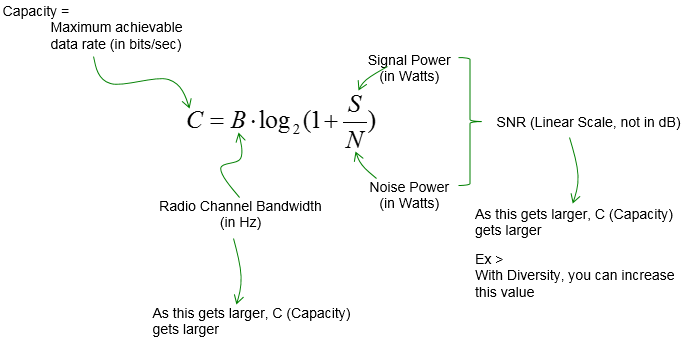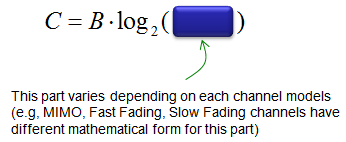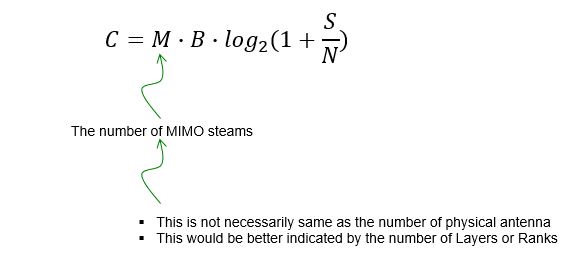|
Communication Technology |
||
|
Channel Capacity/Shannon's Law
One of the most important goals for the engineers designing a communication system is to achieve the highest data rate with as low as possible resource allocation (e.g, spectrum allocation). However, you can easily guess that there would be some physical limit however good/fancy technology you use. Then, the question is 'how can we figure out the physical limit of the achievable data throughput in a given condition ?'. Shannon's Law (or Shannon-Hartly equation) is the equation (theory) to answer this question. The equation shows as follows. If you just verbablize (express in words) this equation, you will get a lot of practical information.
Depending on the implementation and various conditions during the communication, the terms in the log () term would vary as mentioned below.
Now let's convert this equation into words. Just try to interpret this equation into your own words before you read the followings. This kind of practice (converting a mathemtical equation into words and vice versa is very important practice in engineering).
In case of MIMO, we may expand the equation as follows. Interpretation is simple. Channel Capacity is directly proportional to the number of MIMO channel meaning we can indefinately increase channel capacity by increasying the number of MIMO streams (layers) infinately. But practically it would be more and more difficult to increase the number of MIMO streams.
|
||


